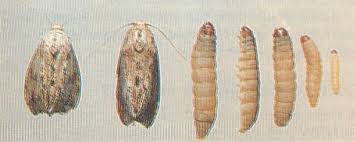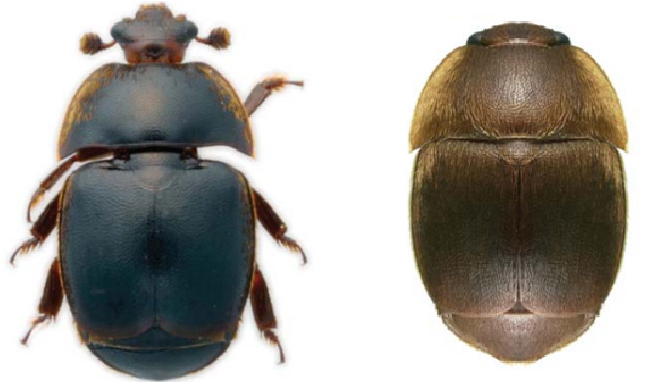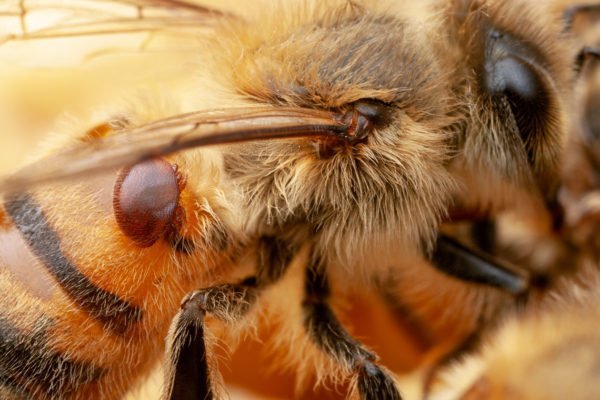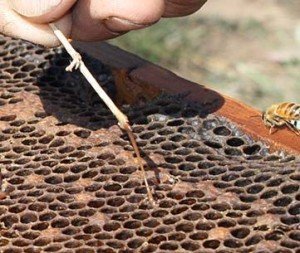Are your bees healthy?
One of the biggest responsibility as a beekeeper is to ensure that your bee are healthy. Bees are obviously highly mobile creatures and disease can be spread from one colony to another. This can be to colonies within your garden or even colonies miles away. Therefore it’s not just a responsibility to your own bees but to other beekeepers as well.
You should check the health of your colony each time you visit. Often there are treatments for most common diseases. This section covers the basic health problems you might encounter.
What does a healthy colony look like?
To spot disease in your colony it is important to learn what a health colony looks like.
Best practises for healthy bees…
You can reduce the chances of your bees becoming ill by some simple best practises. This is especially important if you visit your local apiary or help a friend with their colony.
- Check your bees regularly – so you can catch any problems early.
- Regularly keep you health knowledge up to date so you can spot disease quickly if it occurs
- If you have more than one hive, you should aim to set them up in a way to reduce drifting of bees from one hive to another.
- Do not transfer combs between colonies without first checking for signs of disease
- Regularly wash you bee veil and gloves to stop the spread of disease through your clothes.
- If you inspect multiple beehives in a visit – use disposable gloves between hives
- Avoid second hand equipment unless from a trusted previous owner.
Things that annoy bees…
There are a few pests that can attack your colony of bees. This normally happens in winter when you bees are hibernating and not guarding the entrance 24hr a day.
Wax moth
Amazingly there is type of moth which is rather partial to bee wax. The moths don’t attack the bees themselves but simply lay their eggs in the brood comb. This comb is full of protein from the cocoons of the bee larvae. If left untreated the moth larvae eat their way through most of the comb. You can kill the wax moth larvae by putting any affected frames in the freezer overnight.
Mice
A nice warm sheltered beehive seems like a cracking home to a mouse in winter. In the summer the hive is busy with bees which stops the mice from entering. However, in the winter the hive enterance is often left open to mice. If a mouse does get in the hive the bees will most likely not attack it. So, the best treatment is prevention. In the winter you make the hive entrance as small as possible.
Small Hive Beetle
Small hive beetle (SHB) is a small brown-black beetle with clubbed antennae that originated from sub-Saharan Africa. In Africa, the SHB is not a significant honey bee pest species; however, since arriving in Australia in 2002, the SHB has caused a major impact to honey bee colonies throughout the warm and humid coastal strip between Victoria and North Queensland.
The larval stage of the SHB life cycle causes the majority of damage to active hives by burrowing into combs, eating brood, honey and pollen. Whilst feeding the larvae also carry a yeast species (Kodamaea ohmeri) which contaminates the honey causing it to ferment. Heavy infestations cause the hive to become ‘slimed out’ and may cause the colony to die or abscond.



Varroa
Varroa is a mite that lives on bees and unless it is controlled can eventually cause the colony to collapse.
How to spot varroa mite:
You might think that the varroa mite would be difficult to spot but if you know what you are looking for they stand out quite clearly.
How do the mites live?
Varroa mites live off the bee themselves. They reproduce inside the sealed cells of the brood. Just before the cell is sealed the female mite nips inside and sits under the larvae. Once the cell has been sealed over the mite establishes a feeding site on the immature bee. She will then lays about 5-6 eggs. The female mite lays just one male egg and this mite mates with the females when they hatch. The male dies when the cell is opened and any female mites not yet mated are sterile. The mites favour laying eggs inside drone cells because these take longer to hatch than the worker bees.
During the summer the mites live for about 2-3 months. They survive over winter by living on the adult bees but aren’t able to reproduce because the bees aren’t raising any brood. The mites won’t start increasing their numbers again until the spring when the queen starts laying again.
What effect do mites have on bees?
The bees that are in the cell with the varroa mites usually survive but are not able to grow properly. They may be smaller, have deformed wings or simply not live as long as healthy bees.

Foulbrood
Foulbrood is a very serous disease for bees. It is a nasty bacterial infection of larvae and pupae. Unfortunately it highly contagious and if no action is taken it will certainly kill a colony.
It is good idea to familiarise yourself with the symptoms because it important to take action fast. In fact, if you suspect that your bees have either of the two types you are legally required to contact the Queensland Bee Biosecurity officer – Rebecca Laws. You do not need to be embarrassed about discovering this disease, in fact quite the opposite; you have done a service to the bee keeping community in stopping the spread of the disease. There are two types:
American Foulbrood (AFB)
This is the most serious of the two but the least widespread. Contrary the what the name suggest – American Foulbrood is not an American problem – it occurs in Australia also. American Foulbrood is a bacterium that infects the larvae. It lives in their guts and causes them to die after the brood is sealed. Unfortunately, there is no way of curing a colony with AFB and the colony will have to be destroyed. The symptoms are:
- The capped brood will appear sunken, moist and dark
- There may be an unpleasant rotting smell
- If to push the end of a matchstick into an infected cell – the cell contents can be drawn out like a mucus thread
European Foulbrood (EFB)
This is slightly less serious to AFB but is much more widespread. This is bacterial infection similar to AFB, however the larvae are killed by the bacteria before the cell is capped. There are treatments for EFB, but only if it is caught early. The symptoms are:
- The larvae turn yellowish brown and twisted
For more detailed information about either American Foulbrood or European Foulbrood you should visit the Bee Aware website for their helpful advisory leaflets


How to sterilise your beehive
If you had a disease such as American Foulbrood or European Fouldbrood in your colony, you will need to sterilise your hive. It is also good practice to sterilise your beehive if you are selling or purchasing a secondhand hive.
You can sterilise your hive and frames by using gamma rays from a radioisotope of cobalt. As you probably won’t have a gamma radiation machine to hand, it is recommended that your dispose of your old frames by burning them in a fire.
How to burn and bury AFB material
- Dig a hole at least 30cm deep and clear combustible material away from the area of the pit
- Place the diseased material in the pit and burn it
- Once material is thoroughly burnt, cover it with soil
see also gama irradiation provider Steritech Pty Ltd
For more detailed information about Honey Bee Pests and disease and for keeping up to date on treatments you should visit the Bee Aware website for their helpful advisory leaflets
For a limited time only, there is a free online Honey Bee Biosecurity (BOLT) Training course for all Australian beekeepers, click here for more information.

